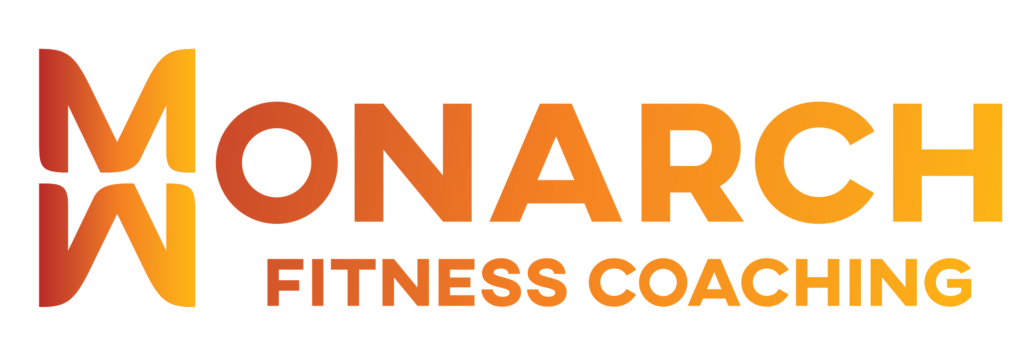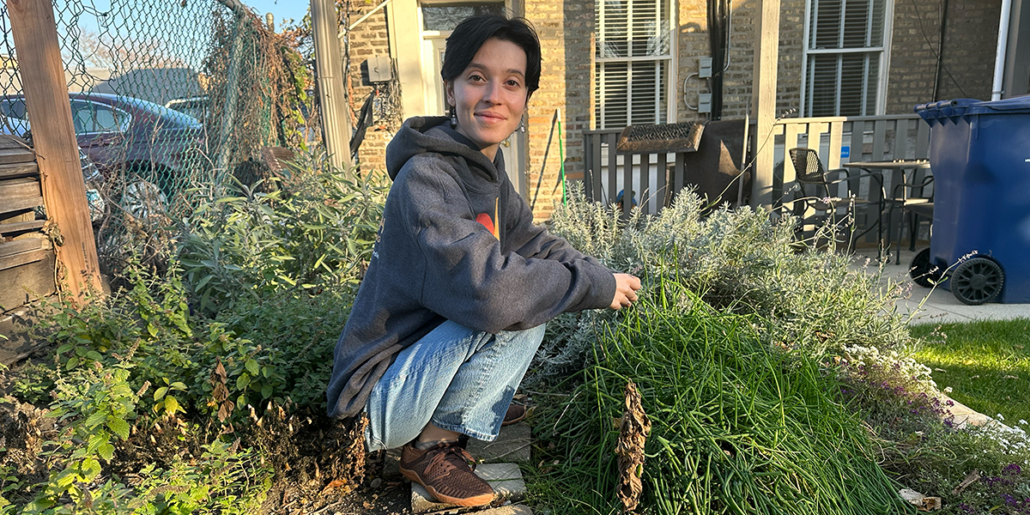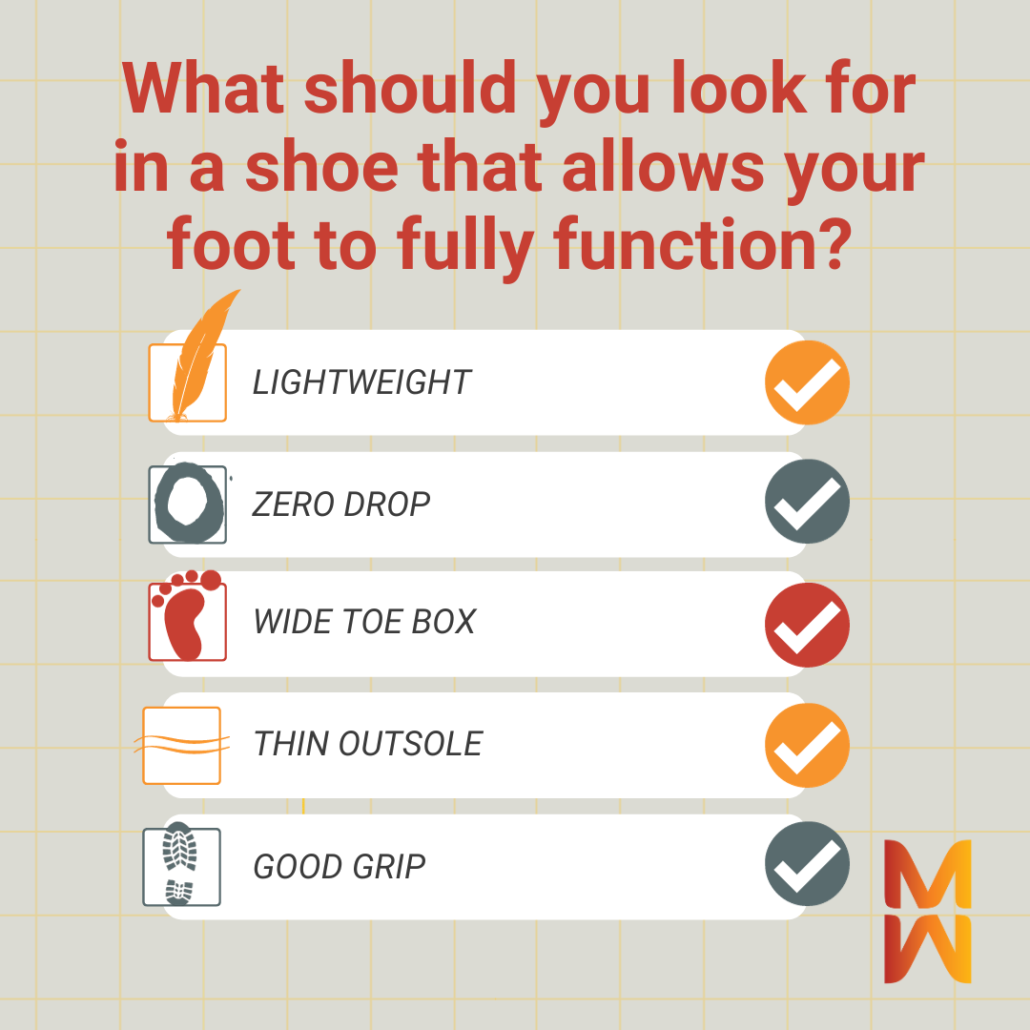Introduction
The foot plays a foundational role in our daily life by providing structural support and enabling basic movements like standing, walking, and running. Despite its importance, the foot is often overlooked. Before working with Monarch Fitness Coaching and learning about foot health, I didn’t spend time training my feet. I thought shoes had to actively cause pain to harm my feet. My concerns were blisters or foot cramps, not my long-term health. Thanks to my coaches, I am focusing on strengthening my feet. Additionally, with the support of my fitness coaching team, I started the process of transitioning to shoes that allow my feet to move well and do more. This makes me happier!
Feet and Function
Feet serve as the foundation for many of our daily activities, including standing and walking. As outlined by Harvard Health Publishing (the consumer health information division of Harvard Medical School), each foot comprises 26 bones, 100 ligaments, and 30 joints, which collaborate to provide functionality and support to the lower leg, ankle, and foot soles.
In a healthy foot’s gait cycle, the midfoot contacts the ground first. Subsequently, the foot rolls forward, stretching the plantar fascia. This movement transitions to the ball of the foot, culminating in a push-off from the big toe. Big toes bend about 70 degrees when walking and carry about 40 percent of the load.
When wearing a shoe that pushes your toes together, pokes into your arch, is rigid, and holds your foot in a fixed position, your foot can no longer move in a healthy gait cycle. Sometimes we need support from our shoes, similarly to how we might need a cast or an ankle brace, but often our foot would be capable of moving well, if we took our supportive shoes off and let our foot move the way it is designed to.
Foot Problems
Healthy feet provide the foundation for remaining active and independent throughout life. Yet, a 2018 American Podiatric Medical Association study found that approximately 75% of adults have some issues with their feet. Half of the 1,300 adults surveyed reported that their foot problems were severe enough to limit their daily activity in some way.
Shoes and Foot Problems
In order to stabilize our entire body, we have a natural toe spread and fan-out as weight is transferred to the foot. Wearing shoes that are too narrow or too short will restrict that range of motion, change the shape of our foot, and decrease foot function. The long-term impacts of improper footwear can include bunions, hammer toes, and reduced blood flow to the feet. Foot dysfunction can reverberate up the body, causing maladaptive movement patterns and pain as well as issues in ankles, knees, hips, and back. As balance and stability decrease with age, the ability to lead an active lifestyle can be diminished.
Training to Keep Feet Healthy
Proactive foot training helps keep feet healthy. Prior to training with Monarch Fitness Coaching, I had pain in my ankle and an uneven gait. I was encouraged when my fitness trainer, Coach Heather, suggested I start mobility training to improve my foot health.
I do daily strengthening and stretching exercises for my toes, arches and ankles. I have slowly started building strength in my feet by walking barefoot in my home and training barefoot, especially during Zoom training sessions. I have stopped wearing rigid footwear that over-supported my feet and pushed my toes together.
The Right Shoes Will Help Keep My Feet in Great Shape
Shoes that allow feet to move with a healthy gait help feet function well. Look for shoes that have the following characteristics:
- Lightweight
- Zero drop (the height from the ground is the same in the front and back of the shoe)
- Wide toe box
- Flexible with a thin outsole
Want to know if your shoe is too small? Try this quick trick. Pull the insole out of your shoe. Stand on the insole, and spread your toes (with your hands if needed). Your toes should spread out like a fan. If the shoe is the correct length and width, your entire foot including the ball of your foot and your toes will remain on the insole.
Transition from restrictive shoes to shoes that support a healthy foot
Monarch Fitness Coaching provides shoe fittings. Additionally, coaches are available to go shoe shopping with clients. If you are interested in purchasing new shoes, schedule a consultation with your primary coach, or, if you are new, schedule an in-depth consultation and training.
Your coach will evaluate how you walk without your shoes, then check the fit of the shoe on your foot, and evaluate how you walk with the shoes on. Many clients find that they are less stable and have more challenges walking with shoes on. This is typically caused by the shoe interfering with a healthy gait.
When I was ready to replace my shoes, Coach Heather videoed me walking with and without shoes, and based on the information from the video, recommended some shoes that might be a good fit. Because I had been wearing restrictive shoes, she suggested starting with a transitional shoe, which would provide some support while still being lightweight, zero drop, and a good fit for my foot. I chose the Whitin Trail Runner. The shoe allows me to walk around town while also providing a tread that is good for hiking.
Coach Heather suggested a gradual transition into the new shoes. She recommended wearing the shoes for 20 minutes a day and gradually increasing the time I spent in them giving my foot time to adjust. I didn’t follow her advice. The day wearing the new shoes I walked three miles. As I had prepared for the switch, I didn’t experience much discomfort; however, I knew if I continued, I could be injured, so I took a step back and began with a trip to the coffee shop.
Over time, my feet became healthier. Walking or hiking, I am able to go farther with no pain as I use my toes and the ball of my feet to stabilize. This has increased my endurance and improved my stability, particularly on uneven surfaces. I no longer experience pain in my ankles or an uneven gait.
Conclusion
Switching to healthy footwear does not have to be an all-or-nothing approach. I will still wear my Doc Martens, cowboy boots, or heels on special occasions. The difference now is that I wear these in moderation, and my choice of footwear is a conscious, informed decision. Before, I thought improper footwear meant pain right away. Now, I know that while my cowboy boots do not feel uncomfortable, I can recognize how I feel less stable in them, and that my feet don’t function as well for a couple of days after. That’s just from one wear.
I recognize that feet are essential to my daily function and mobility. Maintaining foot health through informed decisions and prehab reduces the risks of dysfunction and permits a more active lifestyle. Properly fitting shoes help maintain the long-term health of feet. Healthy feet allow me to move well, do more, and live happier!






